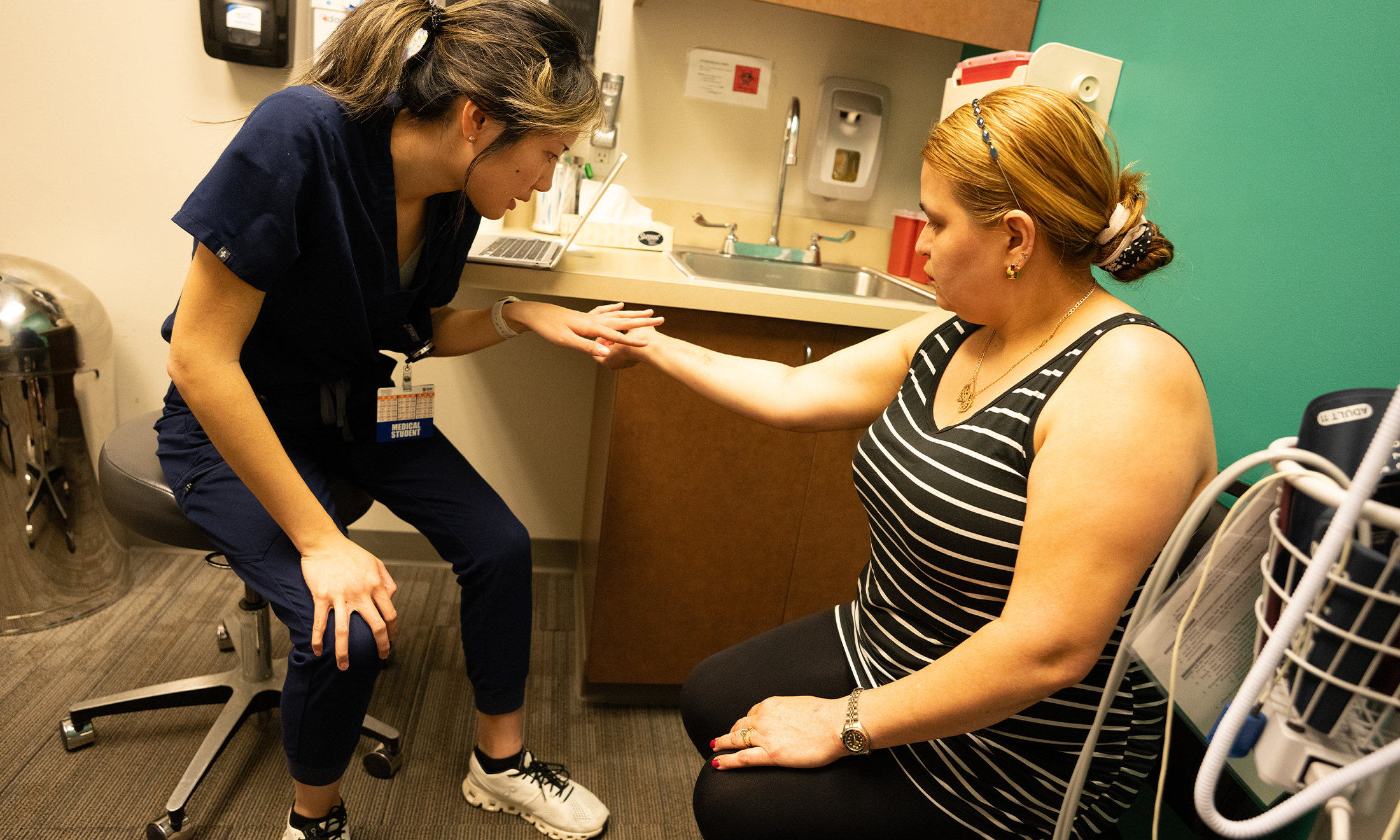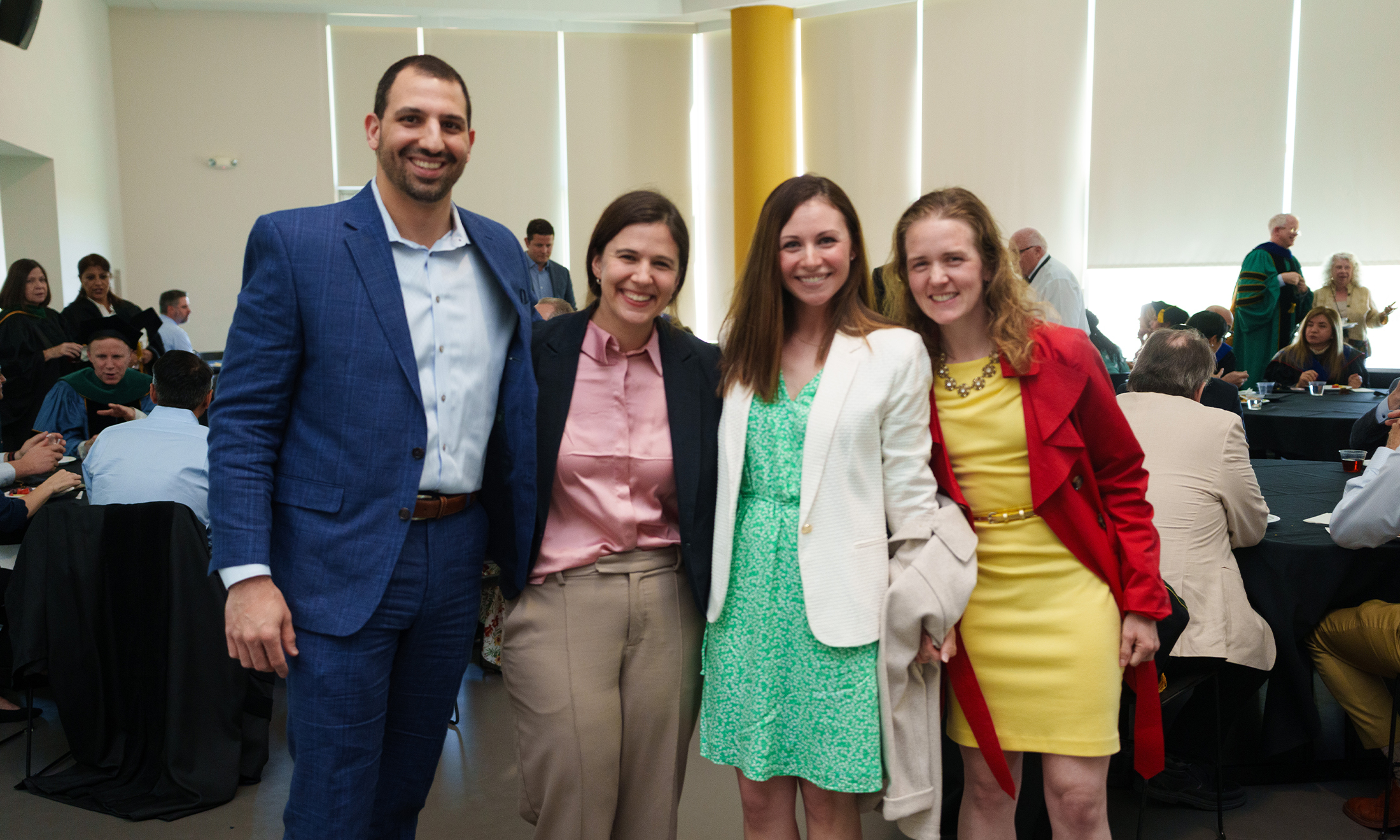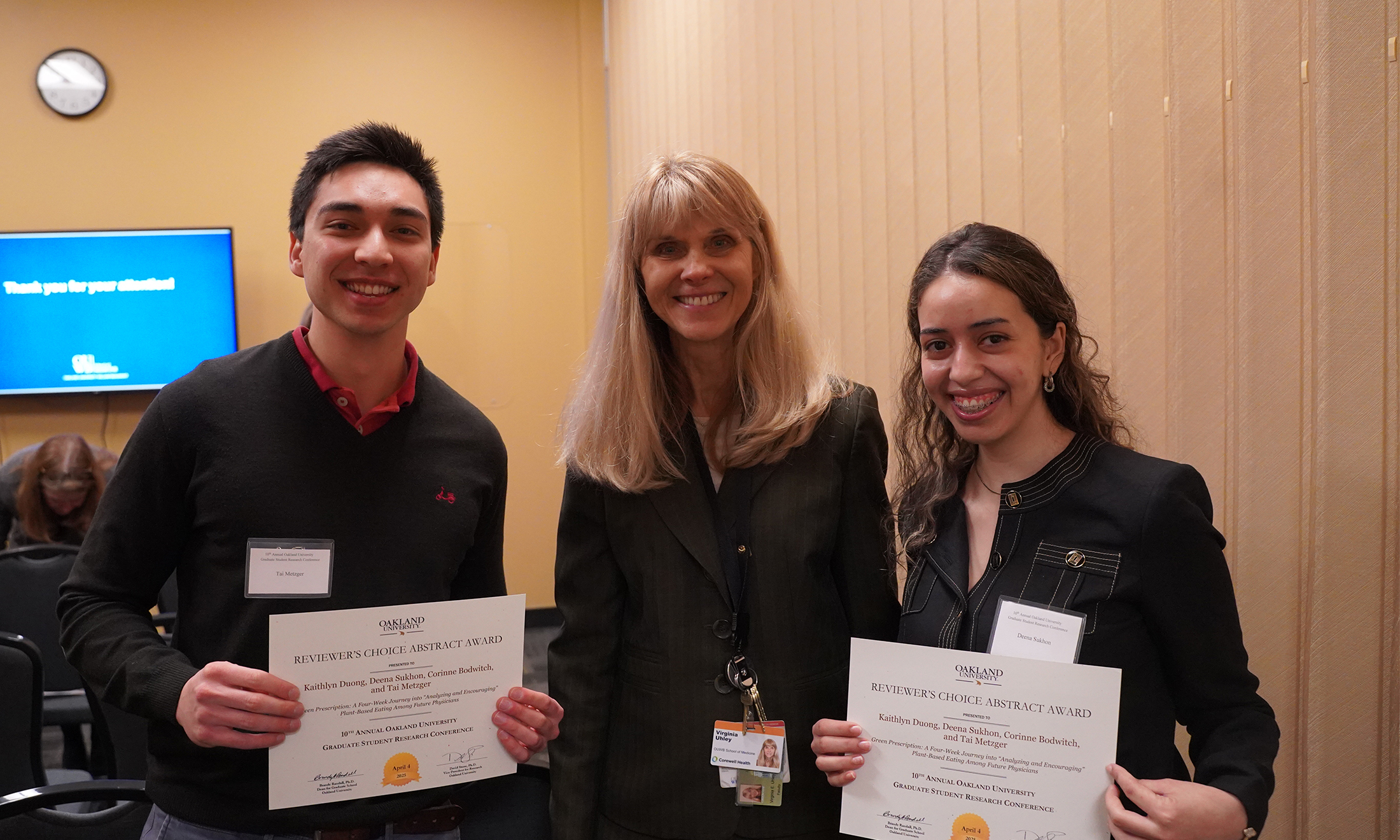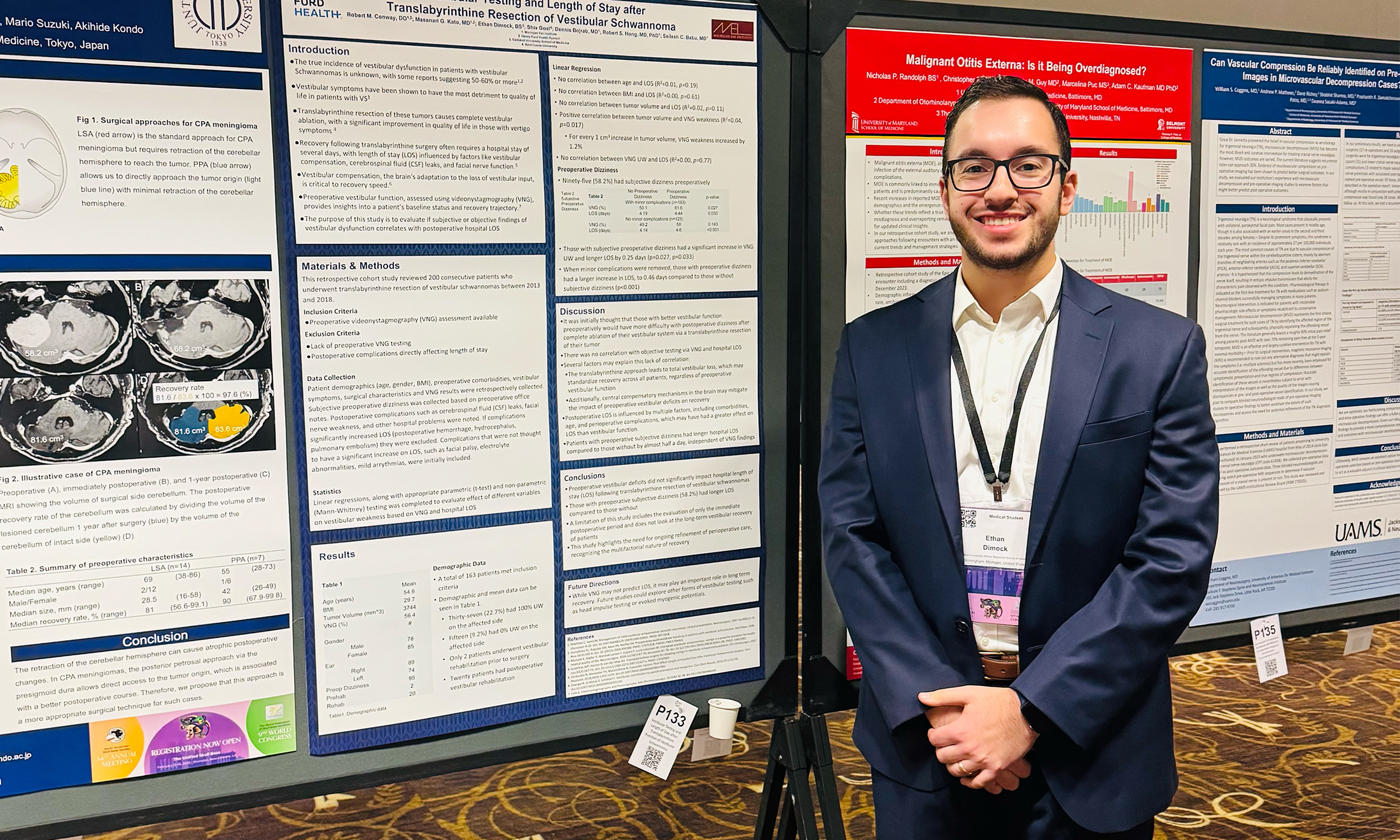‘All the right reasons’
OUWB students have worked with Pontiac’s Gary Burnstein Community Health Clinic since 2015
As a first-year medical student, Andrea Dai was eager for patient engagement but had limited options at that stage of her medical education — until a special volunteer opportunity came along.
The opportunity: a Student-Run Free Clinic (SRFC) at the Gary Burnstein Community Health Clinic in Pontiac.
OUWB students have been working with the clinic since 2015. OUWB’s presence with the longstanding community partner continues to grow, too: In recent years clinics for two specialties beyond family medicine have launched.
And students like Dai, now an M4, keeping coming back to volunteer.
“It’s a great opportunity to take a break from studying and a good reminder of why we are in medicine,” she says. “It’s extra special, too, because we’re taking care of patients who don’t have insurance and can’t get care elsewhere.”
Nick Blackmond, clinic quality, safety, and continuous improvement manager, Gary Burnstein Community Health Clinic, says working with OUWB is a win-win-win situation for the clinic, patients, and students.
“These partnerships not only support the clinic’s mission to provide comprehensive care to underserved populations but also enhance medical education by offering OUWB students hands-on clinical experience under faculty supervision,” says Blackmond.
Filling a void
In 1997 — and after 20 years as a cardiologist — Gary Burnstein, M.D., began providing care for patients at a homeless shelter in Pontiac.
Following his death in 2003, Burnstein’s friends, family, and others rallied to honor his service to the community by establishing the Gary Burnstein Community Health Clinic.
Primarily funded by grants and fundraising events, the nonprofit clinic is based in a 7,000-square-foot, state-of-the-art building at 45580 Woodward Avenue, Pontiac.
Per its website, the clinic “offers free medical, dental, and pharmaceutical care for adults without insurance who meet income guidelines and live in Michigan.”
In 2024, the clinic had nearly 5,000 visits and gave away more than $1.4 million in medical care, nearly $950,000 in dental care, $1 million in medications, and more than $200,000 in lab and imaging services.
Volunteer physicians, dentists, pharmacists, and others allow the clinic to provide these services. SRFCs run by OUWB students also play a big role.
According to the American Academy of Family Physicians, SRFCs generally “provide essential health care services for uninsured and other underserved populations. A (SRFC) … is a student-driven service-learning, outreach program that strives to enhance the health and wellbeing of a community through the provision of medical care.”
“These collaborations are more than just educational opportunities — they are lifelines for patients who otherwise face barriers to specialty care,” says Blackmond.
OUWB’s SRFC Family Medicine Clinic was developed in 2015 through its Family Medicine Interest Group. The first clinic was held in March 2016. Due to increased demand, OUWB SRFCs specializing in gynecology and dermatology have launched in recent years.
Today, OUWB’s SRFC Family Medicine Clinic is held in the evening on the first Thursday of every month. The SRFC Gynecology Clinic is open in the evening on the third Tuesday of every month, while the SRFC Dermatology Clinic takes place on the second Monday.
“Pontiac is an under-resourced area and the clinics created by the students have filled a void,” says Srikala Yedavally-Yellayi, D.O., faculty advisor for the SRFCs since 2016. (She’s also an associate professor, Department of Family and Community Medicine, clerkship director, and co-director, Global Health.)
“And the need for more remains.”
 Hillary Le, M2, co-director, SRFC, provides instructions and details for the dermatology clinic in May. Hillary Le, M2, co-director, SRFC, provides instructions and details for the dermatology clinic in May. |
|---|
‘All the right reasons’
For the first quarter of 2025, a total of 14 OUWB SRFCs were held, allowing for nearly 100 patients to be seen. A total of 47 referrals were ordered and 269 labs were ordered.
“Metrics like referral and lab ordering rates demonstrate that students are thinking comprehensively about patient care,” says Blackmond.
Ross Brothers, M.D., a dermatologist with Northwest Dermatology Group of Bingham Farms, is one of the advisors for the derm clinic. He says there are many benefits for the medical students: hands-on experience; helping the community; and a chance to see that “dermatology is fun.”
Plus, he says, the students are “on top of their game…they know their stuff.”
According to statistics provided by the Burnstein Clinic, the gynecology clinic alone registered a composite quality score (CQS) of 66% — the highest among all Burnstein-affiliated clinics. (The CQS aggregates multiple care delivery metrics into a single score to allow for standardized comparison and tracking of clinic performance over time.)
“(The OUWB medical students) are smart…and they’re here for all the right reasons,” says Brothers.
Yedavally says changes over the last 10 years have led to sustained success. For example, students who take on leadership roles with the OUWB SRFCs are now required to be involved in the clinics for all four years of medical school. It’s helped the clinics be more efficient.
“There’s continuity in the administration of the clinic,” she says. “That’s a huge change that has been really beneficial.”
Another reason for the sustained success, says Yedavally, is that the student volunteers continually get as much out of it as the patients.
Riya Gupta, M2, is one of the new and recently appointed co-directors.
“It really helps us connect with patients,” she says. “The fact that they are in an underserved area…adds a lot of value.”
Hillary Le, M2, is another co-director. Overall, she says, the OUWB SRFC experience can be summed up in one word.
“Fulfilling,” she says. “It’s been really rewarding to be able to work with the attending physicians, administrators (from Burnstein), the volunteers…and to see firsthand the teamwork behind everything.”

 July 15, 2025
July 15, 2025
 By Andrew Dietderich
By Andrew Dietderich









